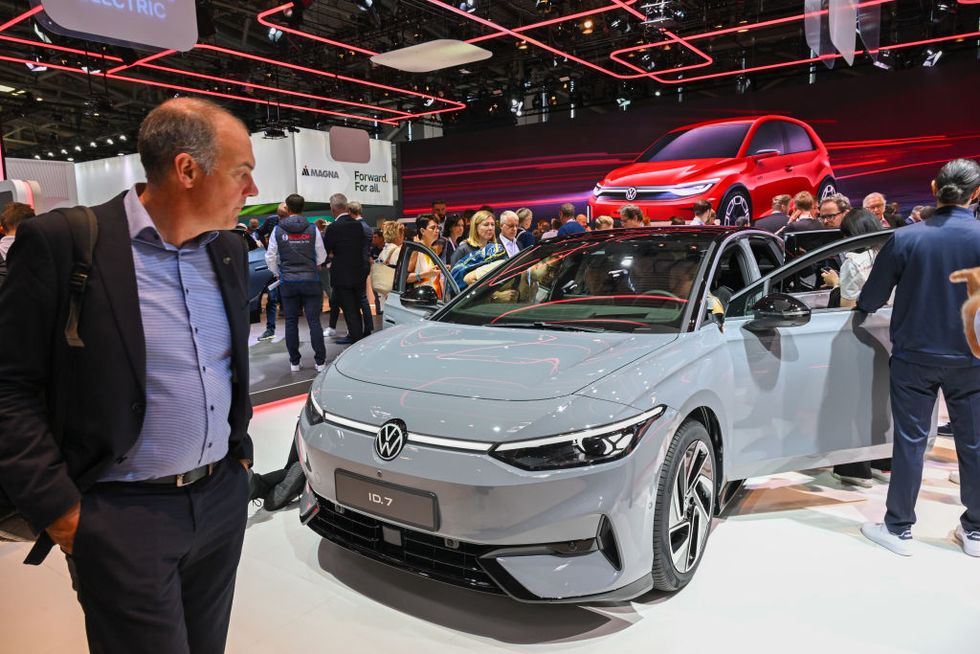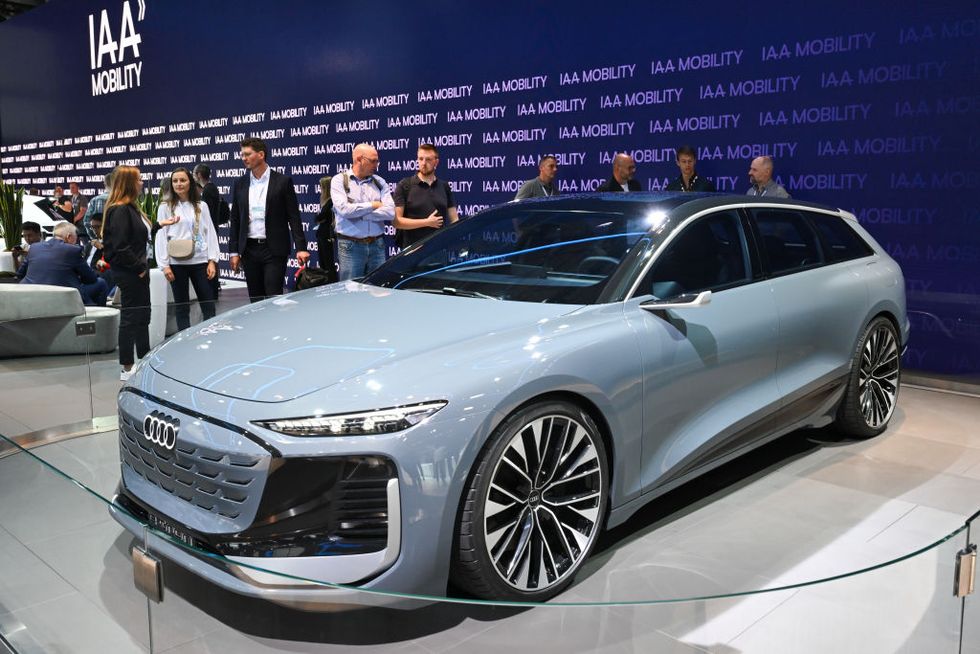- The VW Group, composed of 10 brands including Audi, Porsche, Skoda, SEAT, Ducati, and others, is placing a greater emphasis on design in its business.
- Design departments of the various VW Group brands will now “promote a holistic implementation of the design principles for a coherent brand experience.”
- The VW brand has been more risk averse in its latest electric offerings than many of its competitors, while Audi and Porsche have taken somewhat greater risks.
The Volkswagen Group’s entry into the EV age may been accelerated by the diesel crisis, hastening the auto giant’s turn to electrification. But at a time when most major automakers are turning to EVs, electrification just by itself may not be enough to position the automaker for the future.
Now, the VW Group plans to focus more intently on design as a distinguishing factor in its vehicles. On the eve of the IAA Mobility 2023 in Munich, Germany, the automaker took the opportunity to highlight a new approach to managing its design strategy.
“Good design is an essential factor in delighting our customers,” said Volkswagen Group CEO Oliver Blume. “With sharpened design identities, we design striking products and increase the differentiation of the brands in their exterior, interior, and digital experience. Volkswagen Group is becoming a design-driven company.”
One year into the role of Volkswagen Group CEO, Blume has focused on tackling the major challenges brought about by the pandemic, including the automaker’s in-house Cariad division, while also launching a new EV unit dubbed PowerCo, which will focus on battery production and related EV technologies and tasks.
But these challenges all tend to fall into the hardware and software side of car production, rather than the artistic or creative side.
The early years of EV development that immediately followed the diesel crisis of 2015 seemed to focus on innovative design, with the ID. Buzz being the poster car for Volkswagen’s electric future.
However, the ID. Buzz itself, in production in Germany at the moment and due to land here next year, will not be the first model in the new lineup to arrive on sale. The ID.3 and the ID.4 reached production first, opting for a much more cautious appearance, and the ID. Buzz itself gained a less retro look as it approached production.
The ID.7 sedan, set to challenge the now-updated Tesla Model 3, will also feature a more conventional, moderate look patterned after the ID.4, and will arrive stateside in 2024.
Of course, this conservative aesthetic at the VW brand has raised the question of whether VW wants to stir things up when it comes to EV design at all, even as it has watched Tesla from the sidelines surge ahead in Europe.
Current competitors Hyundai and Kia have taken much greater risks with EV design with vehicles like the Ioniq 6, and it appears to have paid off in a short span of time, to the point of making the ID.4 and the ID.7 look like very safe, conservative choices.
Tesla, meanwhile, has still been able to dominate EV sales in a number of countries despite a much older lineup.
Michael Mauer, Head of Group Design and Head of Porsche Design, sees the challenges that lie ahead.
“People automatically relate to a brand through design because it communicates with them as an emotional language,” Mauer said. “In Volkswagen Group’s multi-brand universe, with customers ranging from the Ducati pilot to the Scania trucker, each brand needs its own strong personality, with a unique and distinctive character.”
Porsche has seen early design success with the Taycan—its first electric model—while sharing a platform with Audi e-tron GT. The electric Macan is on the way in 2024, and we’ve already seen glimpses of the electric 718.
An electric Cayenne is on the way as well, in addition to yet another EV that will be positioned above the Cayenne in size—something that’s admittedly difficult to imagine at the moment.
Audi’s electric models, including the recently renamed and updated Q8 e-tron, have also forged their own path when it comes to design, without losing sight of a common family resemblance. The arrival of the Q4 e-tron and Sportback duo is expected to boost Audi’s EV sales, without changing much when it comes to the brand’s corporate design.
When it comes to the VW brand itself, we’ll see the ID.7 in the metal relatively soon. But it remains to be seen whether the sedan will be able to keep up with a competitive set that appears to be taking much greater risks.
In its new quest to become a design-driven company, VW plans some organizational changes as well.
“Up to now, brand design was organizationally assigned to technical development,” the automaker said. “This close cooperation will remain in place to ensure an optimal product development process. However, design now gains in overall corporate significance. For this reason, the design heads of each brand will move even closer to the respective CEO in the future.”
It will take some time to see the fruits of these changes, with each of the VW Group brands so far assuming different amounts of risk when it comes to styling, and as Tesla has surged ahead in sales on its home continent.
VW’s latest initiative suggests the EV era may demand greater risks.
Should the VW Group brands take greater risks in design in the coming years, or are more conservative approaches better for some of the brands? Let us know in the comments below.

Jay Ramey grew up around very strange European cars, and instead of seeking out something reliable and comfortable for his own personal use he has been drawn to the more adventurous side of the dependability spectrum. Despite being followed around by French cars for the past decade, he has somehow been able to avoid Citroën ownership, judging them too commonplace, and is currently looking at cars from the former Czechoslovakia. Jay has been with Autoweek since 2013.
Read the full article here




